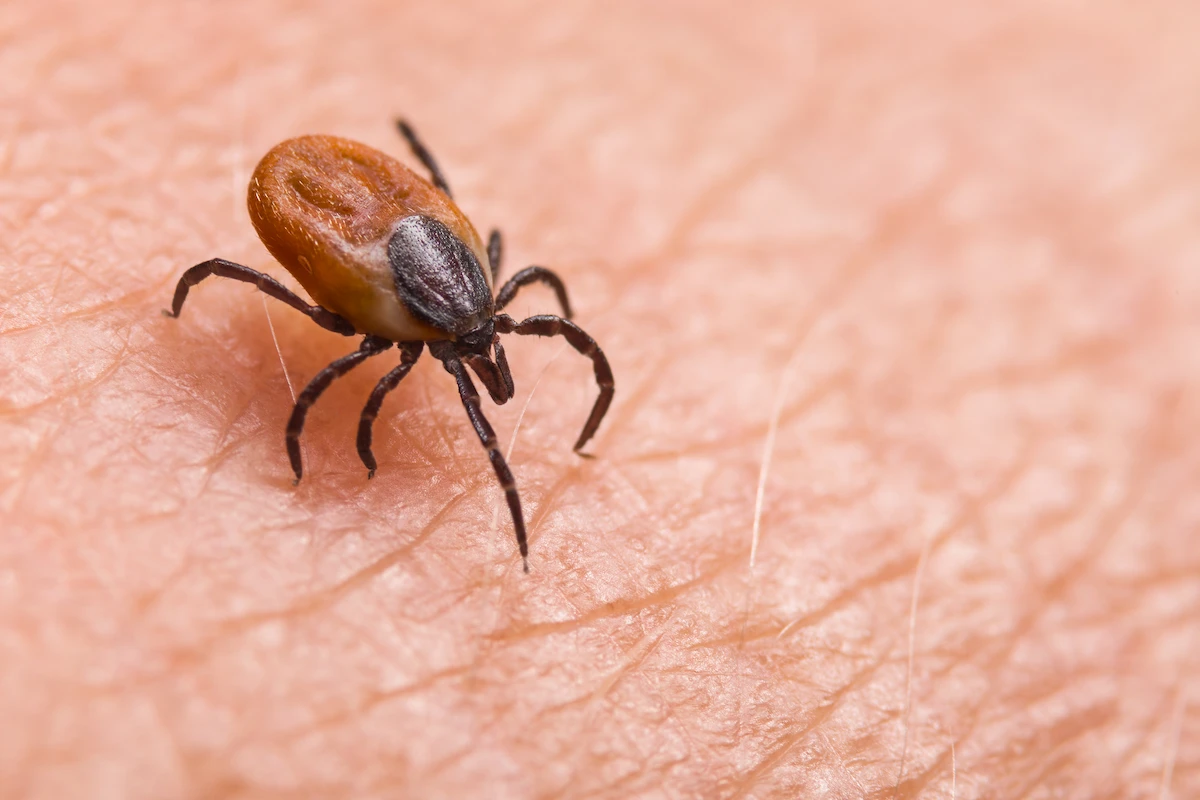Can You Die from Lyme Disease? Seeking Treatment in Miami

Lyme disease, a tick-borne illness, is a growing concern in many parts of the United States, including Florida. While early diagnosis and treatment usually lead to full recovery, untreated or late-stage Lyme disease can have serious consequences.
This article explores the question, “Can you die from Lyme disease?”, delves into the symptoms, causes, and treatment options, and emphasizes the importance of seeking medical attention in Miami if you suspect you might have Lyme disease.
What is Lyme Disease?
Lyme disease is caused by the bacterium Borrelia burgdorferi and is transmitted to humans through the bite of infected blacklegged ticks. These tiny arachnids can latch onto your skin and transmit the bacteria while feeding on your blood.
Tick Bite Itchy: A Common Early Sign
One of the first signs of a tick bite is often an itchy bump or redness at the bite site. This is a normal reaction to the tick’s saliva, but it’s important to monitor the bite for any signs of infection or the development of a rash.
Can You Die from Lyme Disease? The Risks of Untreated Lyme
While Lyme disease is rarely fatal, untreated or late-stage Lyme disease can lead to severe complications that can significantly impact your health and quality of life. These complications include:
- Neurological problems: Meningitis (inflammation of the membranes surrounding the brain and spinal cord), facial palsy (weakness or paralysis of facial muscles), and nerve pain.
- Heart problems: Lyme carditis (inflammation of the heart muscle) can cause irregular heart rhythms and even heart failure.
- Arthritis: Lyme arthritis typically affects the knees and other large joints, causing pain, swelling, and stiffness.

Lyme Disease Face: Facial Palsy
Facial palsy, also known as Bell’s palsy, can occur in Lyme disease when the bacteria affect the facial nerve. This can cause weakness or paralysis of the muscles on one side of the face, leading to a drooping appearance.
Lyme Disease Eyes: Ocular Manifestations
Lyme disease can also affect the eyes, causing:
- Conjunctivitis: Inflammation of the conjunctiva, the membrane lining the eyelids and covering the white part of the eye.
- Keratitis: Inflammation of the cornea, the clear front part of the eye.
- Uveitis: Inflammation of the uvea, the middle layer of the eye.
Tick Bite vs. Mosquito Bite: Distinguishing the Differences
While both tick bites and mosquito bites can cause itchy bumps, there are key differences:
- Appearance: Tick bites often have a distinct “bull’s-eye” rash, while mosquito bites are usually just small, itchy bumps.
- Duration: Ticks can remain attached to your skin for several days, while mosquitoes typically bite and fly away quickly.
- Disease Transmission: Ticks can transmit various diseases, including Lyme disease, while mosquitoes are known for spreading diseases like Zika virus and West Nile virus.
Stage 3 Lyme Disease: Neurological Symptoms
Stage 3 Lyme disease, also known as late disseminated Lyme disease, occurs when the infection has spread throughout the body and can cause various neurological symptoms, including:
- Cognitive impairment: Memory problems, difficulty concentrating, and brain fog.
- Peripheral neuropathy: Numbness, tingling, or pain in the extremities.
- Meningitis: Inflammation of the membranes surrounding the brain and spinal cord.
- Encephalopathy: Brain inflammation that can cause confusion, seizures, and other neurological problems.
Test for Lyme Disease: Early Diagnosis is Key
If you suspect you might have Lyme disease, it’s crucial to get tested. Early diagnosis and treatment can prevent serious complications. Common tests for Lyme disease include:
- ELISA test: A blood test that detects antibodies to the Lyme disease bacteria.
- Western blot test: A more specific blood test used to confirm an ELISA test result.
Primary Care Doctor in Miami: Your Partner in Health
If you’re experiencing symptoms of Lyme disease or have concerns about a tick bite, consult a primary care doctor in Miami. They can:
- Assess your symptoms and medical history.
- Order appropriate tests for Lyme disease.
- Provide a diagnosis and recommend treatment options.
- Refer you to a specialist if needed.
Key Takeaways:
- Untreated Lyme disease can lead to serious complications, including neurological problems, heart inflammation, and arthritis.
- Early diagnosis and treatment are crucial for preventing complications and ensuring a full recovery.
- If you suspect you have Lyme disease, consult a primary care doctor in Miami for evaluation and treatment.
Remember, this article is intended for informational purposes only and should not be considered a substitute for professional medical advice. If you have any concerns about your health or suspect you may have Lyme disease, consult a qualified healthcare professional.
FAQs: Can You Die from Lyme Disease?
- I found a tick on me, but I don’t have any symptoms. Should I still be concerned about Lyme disease?
Not necessarily. Not all ticks carry the bacteria that cause Lyme disease. However, it’s important to remove the tick promptly and correctly and monitor the bite site for any signs of a rash or other symptoms. If you develop any concerning symptoms, consult a doctor in Miami. - What does the rash from Lyme disease look like?
The classic Lyme disease rash is called erythema migrans. It often appears as a circular or oval-shaped rash with a clear center, resembling a bull’s-eye. However, not everyone with Lyme disease develops this rash. - How is Lyme disease treated?
Lyme disease is typically treated with antibiotics, such as doxycycline or amoxicillin. The duration of treatment varies depending on the stage of the disease and individual factors. - Can Lyme disease be cured?
With early diagnosis and appropriate antibiotic treatment, most cases of Lyme disease can be cured. However, if the disease progresses to later stages, it can become more challenging to treat and might lead to long-term complications. - I’m experiencing joint pain and fatigue. Could it be Lyme disease?
Joint pain and fatigue can be symptoms of Lyme disease, but they are also common in many other conditions. If you’re experiencing these symptoms, consult a primary care doctor in Miami for proper evaluation and diagnosis. They can determine if your symptoms are related to Lyme disease or another underlying cause.
Contact Us
Hiriart & Lopez MD, LLC
9950 SW 107th Ave STE 101,
Miami, FL 33176
305-274-8779
Phone: (305) 274-8779
Fax: (305) 274-0646
OPENING HOURS
Monday 7:30 AM–4:30 PM
Tuesday 7:30 AM–4:30 PM
Wednesday 7:30 AM–4:30 PM
Thursday 7:30 AM–4:30 PM
Friday 7:30–11 AM
Saturday Closed
Sunday Closed
OFFICE LOCATION
Can You Die from Lyme Disease? Seeking Treatment in Miami

Lyme disease, a tick-borne illness, is a growing concern in many parts of the United States, including Florida. While early diagnosis and treatment usually lead to full recovery, untreated or late-stage Lyme disease can have serious consequences.
This article explores the question, “Can you die from Lyme disease?”, delves into the symptoms, causes, and treatment options, and emphasizes the importance of seeking medical attention in Miami if you suspect you might have Lyme disease.
What is Lyme Disease?
Lyme disease is caused by the bacterium Borrelia burgdorferi and is transmitted to humans through the bite of infected blacklegged ticks. These tiny arachnids can latch onto your skin and transmit the bacteria while feeding on your blood.
Tick Bite Itchy: A Common Early Sign
One of the first signs of a tick bite is often an itchy bump or redness at the bite site. This is a normal reaction to the tick’s saliva, but it’s important to monitor the bite for any signs of infection or the development of a rash.
Can You Die from Lyme Disease? The Risks of Untreated Lyme
While Lyme disease is rarely fatal, untreated or late-stage Lyme disease can lead to severe complications that can significantly impact your health and quality of life. These complications include:
- Neurological problems: Meningitis (inflammation of the membranes surrounding the brain and spinal cord), facial palsy (weakness or paralysis of facial muscles), and nerve pain.
- Heart problems: Lyme carditis (inflammation of the heart muscle) can cause irregular heart rhythms and even heart failure.
- Arthritis: Lyme arthritis typically affects the knees and other large joints, causing pain, swelling, and stiffness.

Lyme Disease Face: Facial Palsy
Facial palsy, also known as Bell’s palsy, can occur in Lyme disease when the bacteria affect the facial nerve. This can cause weakness or paralysis of the muscles on one side of the face, leading to a drooping appearance.
Lyme Disease Eyes: Ocular Manifestations
Lyme disease can also affect the eyes, causing:
- Conjunctivitis: Inflammation of the conjunctiva, the membrane lining the eyelids and covering the white part of the eye.
- Keratitis: Inflammation of the cornea, the clear front part of the eye.
- Uveitis: Inflammation of the uvea, the middle layer of the eye.
Tick Bite vs. Mosquito Bite: Distinguishing the Differences
While both tick bites and mosquito bites can cause itchy bumps, there are key differences:
- Appearance: Tick bites often have a distinct “bull’s-eye” rash, while mosquito bites are usually just small, itchy bumps.
- Duration: Ticks can remain attached to your skin for several days, while mosquitoes typically bite and fly away quickly.
- Disease Transmission: Ticks can transmit various diseases, including Lyme disease, while mosquitoes are known for spreading diseases like Zika virus and West Nile virus.
Stage 3 Lyme Disease: Neurological Symptoms
Stage 3 Lyme disease, also known as late disseminated Lyme disease, occurs when the infection has spread throughout the body and can cause various neurological symptoms, including:
- Cognitive impairment: Memory problems, difficulty concentrating, and brain fog.
- Peripheral neuropathy: Numbness, tingling, or pain in the extremities.
- Meningitis: Inflammation of the membranes surrounding the brain and spinal cord.
- Encephalopathy: Brain inflammation that can cause confusion, seizures, and other neurological problems.
Test for Lyme Disease: Early Diagnosis is Key
If you suspect you might have Lyme disease, it’s crucial to get tested. Early diagnosis and treatment can prevent serious complications. Common tests for Lyme disease include:
- ELISA test: A blood test that detects antibodies to the Lyme disease bacteria.
- Western blot test: A more specific blood test used to confirm an ELISA test result.
Primary Care Doctor in Miami: Your Partner in Health
If you’re experiencing symptoms of Lyme disease or have concerns about a tick bite, consult a primary care doctor in Miami. They can:
- Assess your symptoms and medical history.
- Order appropriate tests for Lyme disease.
- Provide a diagnosis and recommend treatment options.
- Refer you to a specialist if needed.
Key Takeaways:
- Untreated Lyme disease can lead to serious complications, including neurological problems, heart inflammation, and arthritis.
- Early diagnosis and treatment are crucial for preventing complications and ensuring a full recovery.
- If you suspect you have Lyme disease, consult a primary care doctor in Miami for evaluation and treatment.
Remember, this article is intended for informational purposes only and should not be considered a substitute for professional medical advice. If you have any concerns about your health or suspect you may have Lyme disease, consult a qualified healthcare professional.
FAQs: Can You Die from Lyme Disease?
- I found a tick on me, but I don’t have any symptoms. Should I still be concerned about Lyme disease?
Not necessarily. Not all ticks carry the bacteria that cause Lyme disease. However, it’s important to remove the tick promptly and correctly and monitor the bite site for any signs of a rash or other symptoms. If you develop any concerning symptoms, consult a doctor in Miami. - What does the rash from Lyme disease look like?
The classic Lyme disease rash is called erythema migrans. It often appears as a circular or oval-shaped rash with a clear center, resembling a bull’s-eye. However, not everyone with Lyme disease develops this rash. - How is Lyme disease treated?
Lyme disease is typically treated with antibiotics, such as doxycycline or amoxicillin. The duration of treatment varies depending on the stage of the disease and individual factors. - Can Lyme disease be cured?
With early diagnosis and appropriate antibiotic treatment, most cases of Lyme disease can be cured. However, if the disease progresses to later stages, it can become more challenging to treat and might lead to long-term complications. - I’m experiencing joint pain and fatigue. Could it be Lyme disease?
Joint pain and fatigue can be symptoms of Lyme disease, but they are also common in many other conditions. If you’re experiencing these symptoms, consult a primary care doctor in Miami for proper evaluation and diagnosis. They can determine if your symptoms are related to Lyme disease or another underlying cause.
Contact Us
Hiriart & Lopez MD, LLC
9950 SW 107th Ave STE 101,
Miami, FL 33176
305-274-8779
Phone: (305) 274-8779
Fax: (305) 274-0646
OPENING HOURS
Monday 7:30 AM–4:30 PM
Tuesday 7:30 AM–4:30 PM
Wednesday 7:30 AM–4:30 PM
Thursday 7:30 AM–4:30 PM
Friday 7:30–11 AM
Saturday Closed
Sunday Closed

